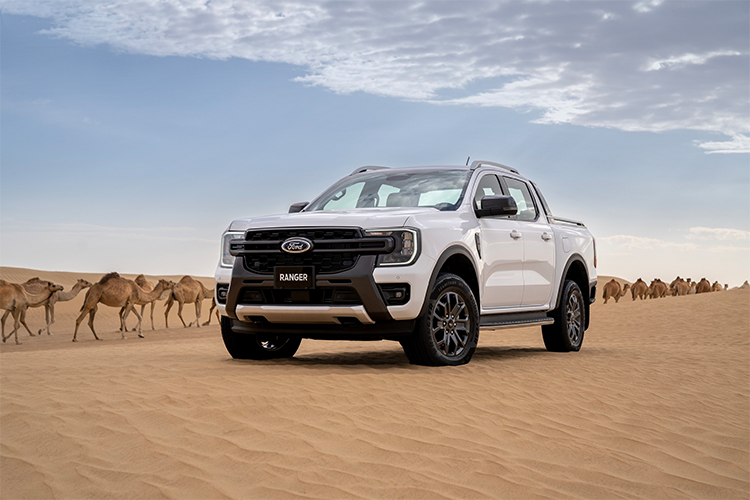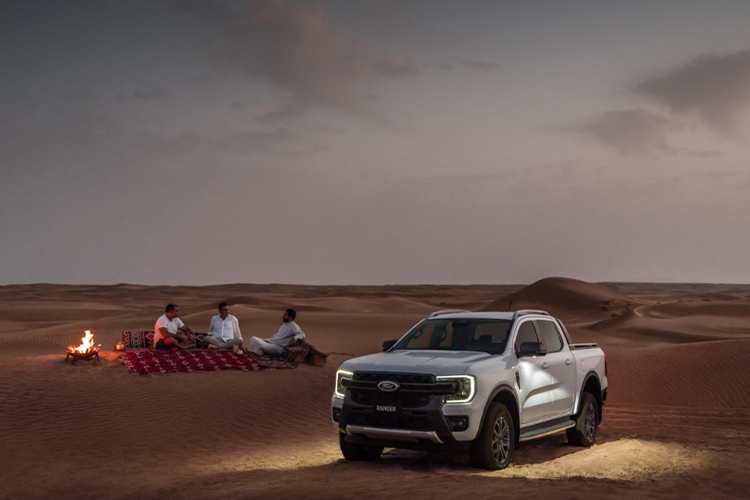Have you always wanted to explore new places and take on challenging terrain? With the Next-Gen Ford Ranger, you can do so effortlessly.
From improvements made to its fully-boxed high-strength chassis and suspension to its driver assist technology, Ranger’s ability to haul more gear over more challenging terrain makes it the perfect vehicle for weekend escapes and multi-day off-grid excursions.
“Ranger owners demand a truck that comes loaded with features that complement their active lifestyles,” said Rob Hugo, dynamic experience supervisor for Ranger and Everest, Ford Australia. “It needs to be able to haul gear everywhere. It needs to tow effortlessly, and it needs to deliver years of dependable service in some of the harshest conditions on the planet. We’ve built the Ranger to handle it all.”
Here are some of the many ways the Next-Gen Ford Ranger helps make every adventure epic.
Long touring holidays and weekend adventures with the family have one need in common: An adaptable load space with room for everything. Ranger’s load box is 50mm wider and has more than 1,200 litres of usable space, making loading camping gear and bulky cargo much easier. Ranger’s bedliner can be customised with DIY partitions at home and then installed and removed as required.
The integrated box step provides a strong, stable way to access everything in the cargo box, so you don’t have to climb onto a potentially muddy, slippery wheel – or clamber over the tailgate to access the cargo box.
There are six tie-down points anchored to the truck bed as standard, while an available rail system with spring loaded cleats gives owners more options for securing their cargo. Wildtrak models are fitted with external aluminum tie-down rails to help make securing bulky loads easier.
Some markets offer an optional flexible rack system, including a sliding load rack that effortlessly glides and securely locks into five different positions along the tub. When combined with the folding roof racks, this system simplifies the transportation of long items. For models without the flexible rack, roof-top channel mounts allow easy fitment of roof accessories including racks or a platform. The Ranger’s roof load limits are up to 350 kg (static) and 85 kg (dynamic).1
Another optional feature in the region is the tow bar, which can be equipped to the Next-Gen Ranger. The Ranger is built for towing, with power to effortlessly haul up to 3,500 kg regardless of your choice of engine.2 That towing capability comes bundled with driver assist features that help you connect, check and tow your trailer with more confidence than ever before. The rear-view camera has guidelines and a zoomed-in view of the hitch that help you to single-handedly position the hitch and receiver with pin-point accuracy, while Trailer Light Check means you ensure everything is working before you set off. The blind spot information system (BLIS) now covers trailers and means you can change lanes with more confidence, while trailer sway control is designed to sense when a trailer is swaying and adjusts braking and engine torque to maintain control.3
Choosing a campsite can be difficult. Driving there doesn’t have to be. Ranger’s four-wheel-drive systems and bespoke drive modes are designed to help make the road journey more comfortable and efficient but are also there to take care of things when track conditions get tough.
Normal and Eco drive modes deliver power and efficiency on the road journey, while Slippery, Mud/Ruts and Sand modes are there for when the tarmac ends and the real adventure begins. A dedicated Tow/Haul mode is designed to be used when towing or carrying a heavy load and optimizes gear-shift timing to maintain power delivery and engine braking in hilly terrain, it also increases steering weight for improved control.
Ranger’s drive modes are designed to work with the truck’s advanced full-time 4x4 system – or the available electronic shift-on-the-fly part time system – to power through.
Ford’s Advanced 4WD system is an automatic on-demand system with four settings – 2H, 4A, 4H and 4L. When set to 4A (4WD Auto), the on-demand system is fully active and constantly monitors traction conditions, sending a proportional amount of torque to the front wheels as needed. It is also the default 4WD mode for many of Ranger’s Selectable Drive Modes and has unique calibrations for each drive mode.
Pressing the off-road button on the center console unlocks a wealth of information on the enormous center touchscreen. The screen displays driveline settings and vehicle pitch and roll angles. It also provides access to the 360-degree camera for a variety of views, including a forward view that shows where the front wheels are tracking.4
The auxiliary switch bank in the overhead console allows you to easily fit powered accessories like a winch, additional lights, or air compressor. The switches are connected to a power distribution box – and six sets of wires have been run to locations around the truck to help owners power their accessories. The wires are located near the radiator support, near the auxiliary fuse box in the engine bay, and on the electrical circuit to the trailer hitch at the rear.
Setting up camp at night or working around the Ranger after dark is much easier with Ranger’s exclusive Zone Lighting. Controlled via the in-vehicle touchscreen, Zone Lighting illuminates the area around the truck, and the truck bed – making it more convenient for owners to find their gear in the dark or pack up at the end of a day exploring.




